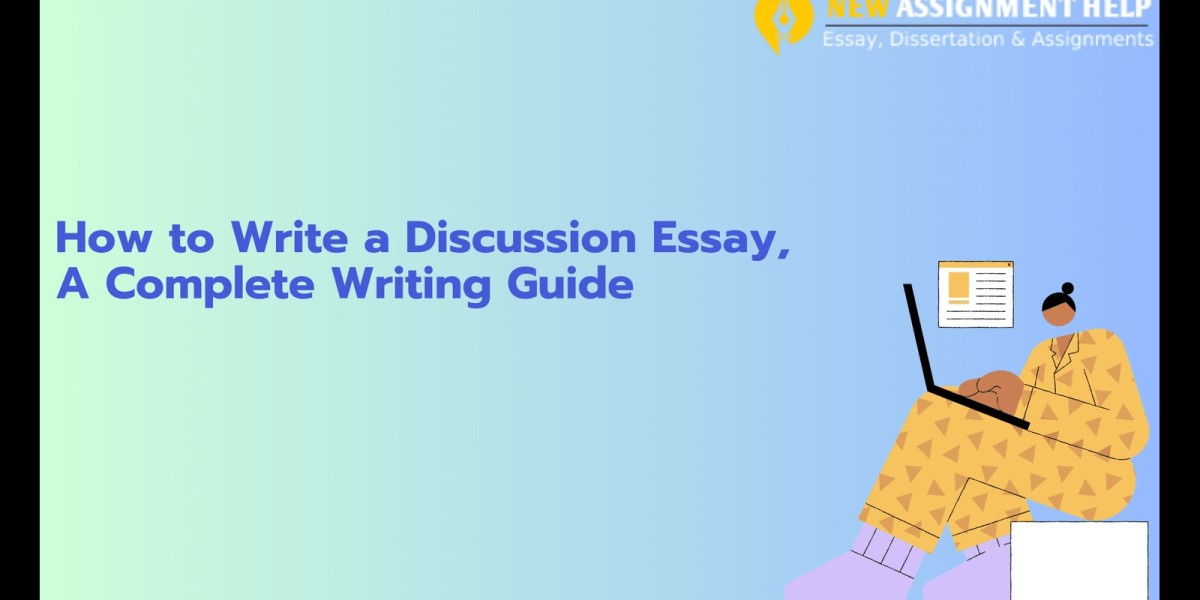A discussion essay is a common academic writing task at the university level, requiring students to explore and evaluate different perspectives on a given topic. It is not just about presenting facts but about engaging in critical analysis, presenting arguments, and supporting them with evidence. Despite its importance, many university students struggle to write effective discussion essays, often making mistakes that undermine the quality of their work. In this article, we will explore the common mistakes students make when writing a discussion essay and provide strategies to avoid these pitfalls.
1. Misunderstanding the Essay Prompt
1.1. Failing to Identify the Key Task
One of the most frequent mistakes students make is misunderstanding the essay prompt. Discussion essays typically ask students to examine multiple viewpoints or argue for and against a topic. However, students sometimes confuse the task with other essay types like argumentative or descriptive essays, leading them to focus solely on one viewpoint or to describe facts without engaging in meaningful discussion.
1.2. Not Addressing All Aspects of the Prompt
Another mistake is failing to address all parts of the essay question. Discussion essay prompts often contain multiple components, requiring students to explore various perspectives. Some students only focus on one aspect, neglecting other important elements, which results in an incomplete response.
Solution: Break Down the Prompt
Before you begin writing, carefully read and break down the essay prompt. Identify whether you are asked to discuss both sides of an argument, compare different viewpoints, or weigh the pros and cons of a particular issue. Make sure to address all aspects of the prompt in your essay.
2. Weak or Unclear Thesis Statement
2.1. Lack of a Clear Position
A common mistake is writing a weak or unclear thesis statement. The thesis is the central point of your essay, guiding the reader on what to expect from your discussion. Some students fail to clearly express their position or the direction of their discussion, leading to a vague or confusing essay structure.
2.2. Thesis Statements That Are Too Broad
Another issue is writing a thesis statement that is too broad or general. A broad thesis does not provide specific insight into the discussion and often results in an unfocused essay.
Solution: Craft a Specific and Clear Thesis
To avoid this mistake, make sure your thesis statement clearly outlines the main argument or the scope of the discussion. It should be specific enough to provide a clear direction for your essay while allowing you to explore different perspectives. For example, instead of writing “This essay will discuss the pros and cons of social media,” a more focused thesis could be: “While social media enhances communication and access to information, it also raises concerns regarding privacy and mental health, which this essay will explore.”
3. Poor Essay Structure
3.1. Lack of Organization
A well-structured essay is key to presenting a logical and coherent argument. However, many students fail to organize their ideas effectively, resulting in a disjointed or confusing essay. This typically occurs when students do not follow a clear introduction, body, and conclusion format, or when they jump from one idea to another without proper transitions.
3.2. Failing to Balance Arguments
In a discussion essay, it’s crucial to present both sides of an argument or compare multiple perspectives fairly. Some students focus too much on one side while neglecting the opposing viewpoint, leading to a biased discussion.
Solution: Plan and Outline Your Essay
Before writing, create an outline to organize your ideas. Ensure that your essay includes a clear introduction, body paragraphs that discuss different viewpoints, and a conclusion that synthesizes the discussion. Use topic sentences at the beginning of each paragraph to signal the main idea, and use transitions between paragraphs to maintain the flow of the essay.
4. Lack of Critical Analysis
4.1. Relying on Description Instead of Analysis
A common mistake in discussion essays is focusing too much on describing facts or summarizing information without engaging in critical analysis. Discussion essays require students to evaluate arguments, weigh evidence, and make reasoned judgments. Simply presenting information without analyzing or interpreting it does not fulfill the essay’s objective.
4.2. Superficial Analysis
Another problem is superficial analysis, where students touch on different viewpoints without delving deeply into the nuances of the arguments. This can result in a shallow essay that lacks depth and insight.
Solution: Engage in Critical Thinking
To improve critical analysis, focus on not just what is being said but how and why it matters. Compare and contrast different arguments, evaluate the strengths and weaknesses of each viewpoint, and make connections between different ideas. Use evidence to support your claims and explain the significance of each point in relation to the broader discussion.
5. Inadequate Use of Evidence
5.1. Lack of Supporting Evidence
Many students fail to provide adequate evidence to support their arguments. Without evidence, your claims appear unsupported, and the essay lacks credibility. This is especially problematic in discussion essays, where presenting well-supported arguments is essential.
5.2. Using Irrelevant or Unreliable Sources
Another mistake is using irrelevant or unreliable sources to back up your points. Students may rely on outdated, biased, or non-academic sources, which undermines the quality of the discussion.
Solution: Use Credible and Relevant Evidence
To avoid this mistake, make sure to use reliable, academic sources such as journal articles, books, and reputable websites. Each point you make should be supported by evidence that is directly relevant to the topic. When using sources, always cite them properly to avoid plagiarism and give credit to the original authors.
6. Overgeneralizing or Oversimplifying Arguments
6.1. Making Generalizations
Some students make the mistake of overgeneralizing, drawing conclusions that are too broad or simplistic. Generalizations often lack nuance and fail to capture the complexity of the issue being discussed. For example, a statement like "All people use social media" is an overgeneralization that ignores variations in usage patterns across different demographics.
6.2. Oversimplifying Complex Issues
Discussion essays often deal with complex, multi-faceted issues. However, some students oversimplify these issues, ignoring the grey areas or nuances that are essential for a balanced discussion.
Solution: Use Specific and Nuanced Arguments
Avoid making sweeping generalizations. Instead, provide specific examples and acknowledge counterarguments or exceptions to your points. A nuanced discussion shows a deeper understanding of the topic and adds complexity to your argument.
7. Weak Conclusion
7.1. Restating the Introduction
A common mistake in writing conclusions is simply restating the introduction or summarizing the essay without adding new insights. This results in a weak conclusion that fails to leave a lasting impression on the reader.
7.2. Failing to Synthesize the Discussion
Some students do not synthesize the arguments presented in the essay, missing the opportunity to draw meaningful conclusions or highlight the significance of the discussion. A good conclusion should not just summarize but also reflect on the implications of the arguments discussed.
Solution: Craft a Thoughtful Conclusion
Your conclusion should go beyond summarizing the essay. Synthesize the key points and offer a final reflection on the topic. Highlight the significance of your findings and suggest any future areas for research or discussion. A strong conclusion ties together your arguments and leaves the reader with a sense of closure.
8. Inadequate Proofreading and Editing
8.1. Neglecting to Proofread
After completing the essay, many students neglect to proofread their work thoroughly. This can result in grammatical errors, typos, and formatting inconsistencies, all of which detract from the professionalism of the essay.
8.2. Ignoring Structural and Logical Issues
Some students fail to review their essays for logical flow and coherence, resulting in inconsistencies or unclear arguments.
Solution: Proofread and Edit Thoroughly
Always leave time to proofread and edit your essay before submission. Check for grammatical errors, spelling mistakes, and punctuation issues. Beyond surface-level errors, review the logical flow of your essay, ensuring that your arguments are clear and well-structured. If possible, ask a peer or tutor to review your essay for additional feedback.
Conclusion
Writing an effective discussion essay requires careful attention to structure, critical analysis, and the use of supporting evidence. Many university students make common mistakes, such as misunderstanding the essay prompt, writing weak thesis statements, or failing to engage in meaningful analysis. By identifying and addressing these mistakes, students can improve the quality of their discussion essays and produce more sophisticated and well-argued pieces of academic writing. Careful planning, thoughtful organization, and rigorous proofreading are key to crafting a successful discussion essay that reflects critical thinking and academic excellence.



